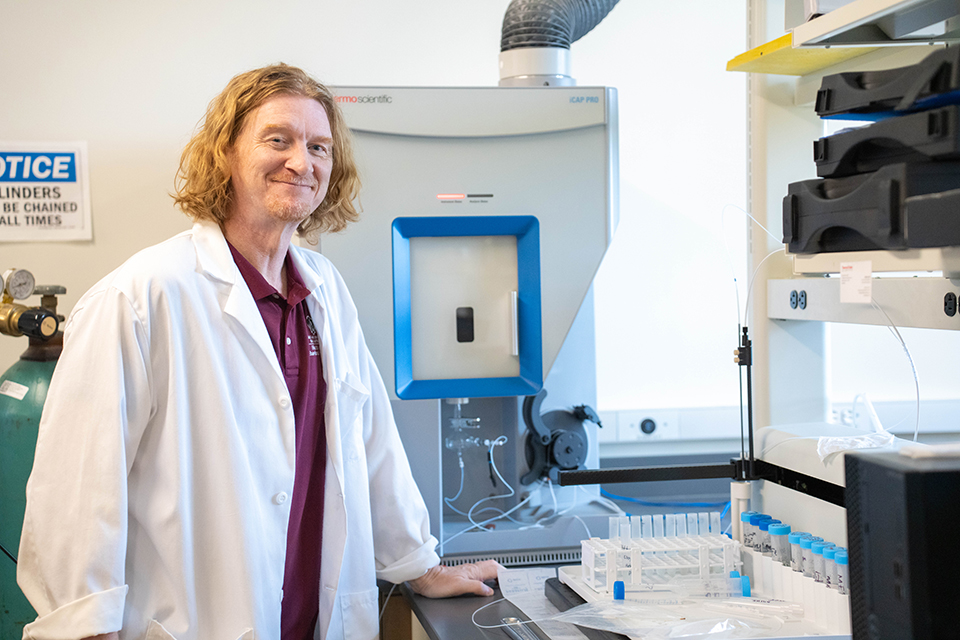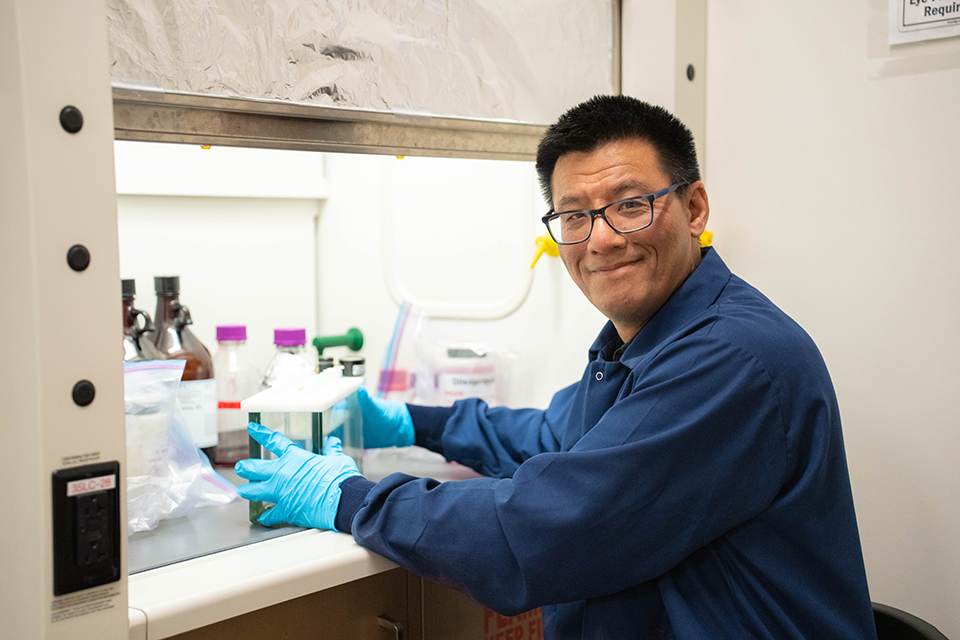A pair of Texas A&M University-San Antonio researchers is helping spearhead a study to investigate if certain pollutants in the local environment and food supply contribute to obesity and other chronic illnesses.
It’s a particularly pressing issue in Bexar County, where 65.7% of adults are either overweight or obese, according to the Centers for Disease Control and Prevention. The problem is even more pronounced in South San Antonio, a historically underserved part of the city where there is a 20-year difference in lifespan compared to parts of the North Side.
The research project is funded by a $585,000 grant from the Baptist Health Foundation, which supports not-for-profit healthcare services and education. Drs. Bryan Bayles and Walter Den with the University are partnering with two researchers from Texas A&M University in College Station, Drs. Xinyue Ye and Xingmao Ma, who is the principal investigator.
Together, the team is studying the prevalence of polyfluoroalkyl substances (PFASs) and micro/nanoplastics (MNPs). A growing body of scientific evidence indicates that exposure to these pollutants, via food consumption, drinking water, or absorbing them through the soil and air, can increase the rate of obesity, type 2 diabetes, and other metabolic disorders.
PFAS, also known as “forever chemicals,” are common man-made contaminants that are found in a variety of consumer products, including fabrics, food packaging, and non-stick coatings. Microplastics are tiny plastic fragments found in synthetic textiles, clothing, dust, and packaging.
The research project is unfolding in multiple phases. First, Drs. Bayles and Den are launching a survey this fall with the goal of recruiting up to 200 University students, a demographic that reflects the local population. The participants will be asked about their dietary habits, sources of food and water, their family’s economic and physical health history, and daily activity.
Because of well-documented socioeconomic disparities, South San Antonio’s population faces elevated risks due to a combination of food insecurity, limited access to fresh foods, and higher consumption of fast food, said Bayles, an assistant professor of community health. These disparities have worsened since the COVID-19 pandemic, which makes understanding the hidden environmental factors behind chronic illness all the more important.
“There’s growing awareness that health disparities aren’t just about personal choices—they’re about systemic issues,” Bayles said. “When we look at this through an environmental health lens, we start to see how packaging, policy, and access all play a role.”

Of those students surveyed, a subgroup of about 50 will be invited to undergo testing at the San Antonio Vascular and Endovascular Clinic, with a focus on respondents who indicated they frequently eat fast food and potentially have greater exposure to unhealthy chemicals. Researchers at the clinic will measure body mass index, blood pressure, and collect blood samples to determine PFAS and MNP levels. The hope is to complete all the testing by the end of the year.
Bayles said this information will help the research team obtain a detailed look at dietary patterns in South San Antonio and gain more insight into the levels of PFAS and MNPs among young people.
While Bayles focuses on diet, Den’s role in the study centers on water and soil quality. A professor in the Department of Natural Sciences and program coordinator for the Water Resources Science and Technology Program, Den and his team will test local groundwater, surface water, and tap water.
The team will also test local soil samples, especially from backyard gardens. While Den said it can be difficult to trace PFAS and MNP sources in water and soil, it’s an important exploratory step and helps lay the groundwork for further research.
“We’re looking for the connection between the presence of these harmful chemicals and the frequency with which young adults are eating fast food as well as their exposure to environmental risks, and how it all relates to their body type and health,” said Den.

The study is also looking at geographic risk factors. Participants’ addresses will be mapped to see if proximity to known toxic sources, such as industrial areas, correlates with higher levels of chemical exposure.
“This isn’t just about behavior or personal choices,” Bayles says. “We’re looking at the whole picture: environmental, economic, and political factors that shape our food supply—and our health.”
Once all the data is analyzed, Bayles, who serves as chair of the San Antonio Mayor's Fitness Council, plans to work with local organizations like the San Antonio Food Bank, YMCA, and the city’s Food Policy Council to share results and craft food education programs and policy initiatives.
“This could lead to larger studies where we track participants over time to better understand long-term health outcomes,” Bayles said. “We’re paying a huge cost—financially, emotionally, physically—because of chronic illness. If we can make healthier food choices easier, cheaper, and safer, we’re not just preventing disease. We’re improving lives.”